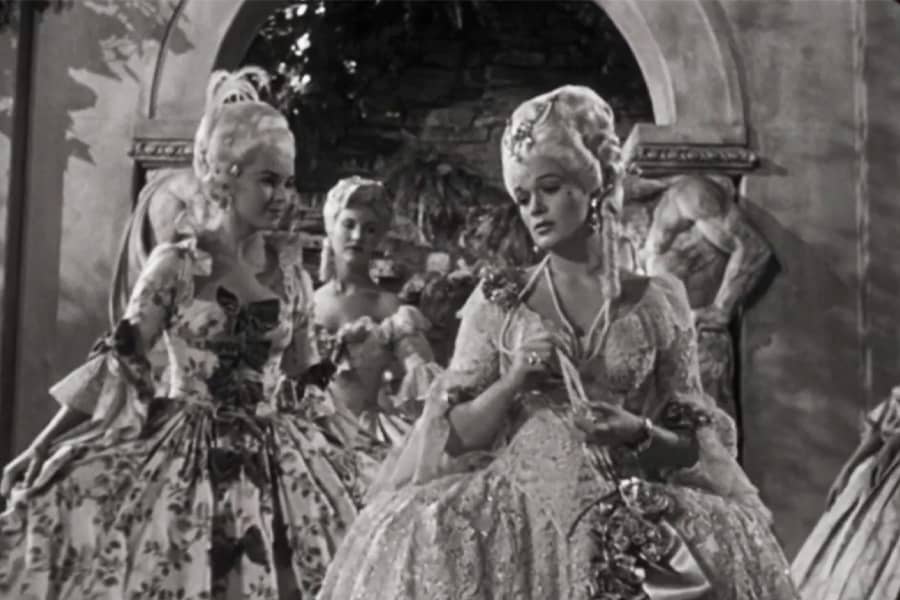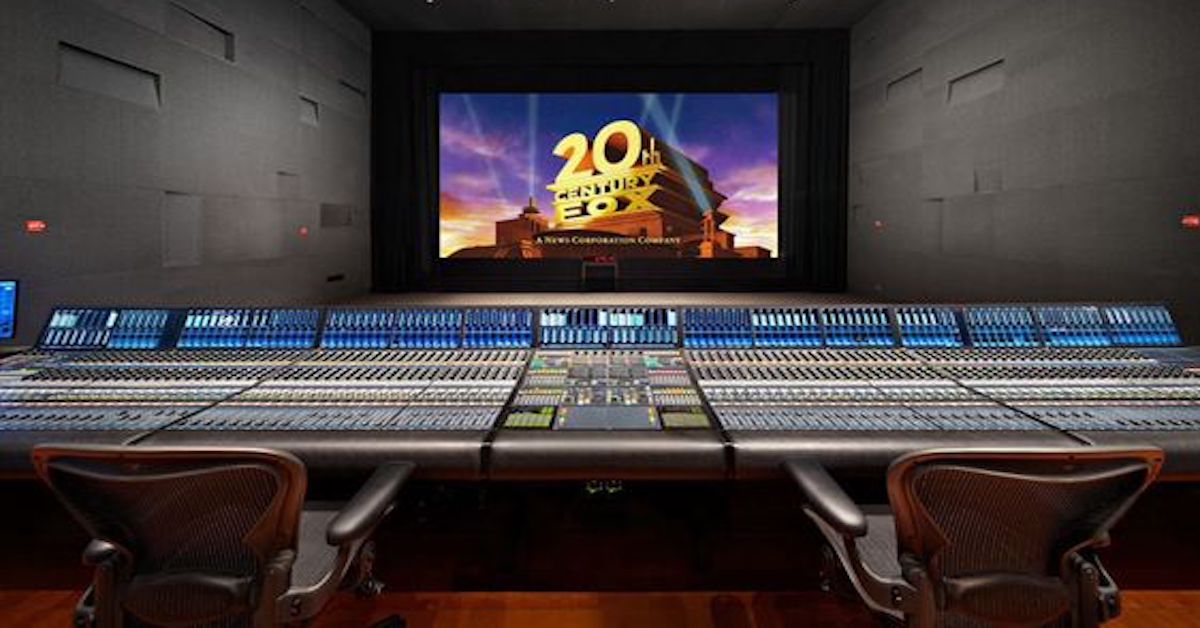
In the scene of the first premiering of The Dueling Cavalier, viewers are able to see the failures of manipulating sound in film. In the first scene, the sound of Lina Lamont playing with her pearl necklace was so loud because the microphone was placed on her body. The sound was then misinterpreted by R.F. when he asks “What’s that, the thunderstorm outside?” It even sounds muffled at certain points when Lina speaks, meaning the microphone placed on her must have been covered. When Don comes into the scene, the audience can audibly hear the stretching of his fabric as he walks, giving away that his microphone is also attached to his costume. Each time Lina turned her head away to add dramatic effect while talking to Don, her voice became significantly lower. While recording the film, we saw how hard it was for Lina to talk in the direction of the microphone so her voice could be loud enough, while trying to add and be dramatic.

Gene Kelly and Stanley wanted viewers to look at the ins and outs of making a film. This epic failure of using sound in film showcases how sound has elevated over time. The use of microphones on actors proved to be too difficult. You wanted the audience to hear the actors clearly, but not so clearly that you can hear the sound of the actor’s heartbeat. There was also the issue that Lina faced, where she couldn’t speak into the direction of a stagnant microphone and act at the same time. She needed to move her body and perform, but couldn’t stay facing the microphone simultaneously. We know today, that this issue was solved with the development of a shotgun microphone, placed above the actor’s head. We even see how Don, Kathy, and Cosmo develop the use of sound in their film by coming up with the idea to record all talking and singing post-production, have the actors mouth their lines, then placing the recorded track over the video. Sound is so poorly understood during this time of development for filmmaking, and Dancin’ in the Rain allows viewers to see how poorly the use of sound in film was in the 20s.
You’ve accurately pointed out the challenges faced by filmmakers during the transition from silent films to “talkies” in the 1920s, highlighting the limitations of the technology available at the time.Indeed, during that era, microphones were often attached to the actors’ bodies or hidden in their costumes, resulting in various issues such as loud, muffled, or inconsistent sound quality. The struggle of actors like Lina Lamont to speak directly into the microphone while delivering their lines and performing physically was a genuine challenge.
The evolution of sound technology in filmmaking has come a long way since then. The mention of the development of the shotgun microphone, which could be placed above the actors’ heads, is a significant advancement. This type of microphone allowed for clearer and more consistent audio capture without the need for actors to constantly adjust their positions to speak into a stationary microphone. Additionally, the idea of recording dialogue and singing separately (post-production dubbing) and then syncing it with the video footage was a breakthrough in improving sound quality and flexibility in filmmaking. This technique, as depicted in the film, played a crucial role in the transition to more sophisticated sound recording and mixing processes.
In summary, your analysis effectively demonstrates how “Singin’ in the Rain” serves as a window into the early challenges and experiments in sound manipulation during the 1920s, highlighting the significant advancements in audio post-production that have since transformed the industry. It’s a testament to the ever-evolving nature of filmmaking technology and techniques.
The scenes you have outlined here were both pretty funny and also exceedingly insightful in my eyes. I completely agree that Gene Kelly and Stanley Donen were very purposeful with those scenes. I think they were looking to depict how difficult this revolutionary change in Hollywood was for filmmakers, especially for those who had perfected a process before the emergence of the “talkies”. I also feel that, perhaps, the filmmakers felt that some audiences might not take the first-world struggles of Don Lockwood and Monumental Studios too seriously, even though it was a major shift for the industry that challenged many. As such, I believe they incorporated some humor, depicted in those scenes you described early on in the post, to try and keep the tone of the film light, even while the main characters were facing some difficult changes in their careers and lives.